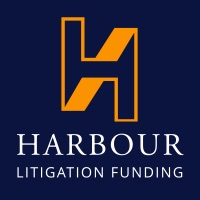10 January, 2018
Litigation is an important tool for any Insolvency Practitioner (IP) seeking to recover assets for an insolvent estate. The high cost of litigation poses a problem for the officer holders of an insolvent estate which often has no funds to pursue claims.
In the past, one solution was the Conditional Fee Agreement (CFA), pursuant to which lawyers would discount their fees in return for an uplift if the claim were successful. A successful claimant could then recover this uplift from the defendant. The successful claimant could also recover the premium paid to the insurer for After the Event Insurance.
LASPO 2012
The ability to recover these success fees and ATE premiums was abolished by the Legal Aid Sentencing and Punishment of Offenders Act 2012 (LASPO). IPs initially benefitted from an exemption but that came to an end on 6th April 2016, despite vigorous lobbying from industry bodies, such as the R3. The end of the exemption has made it harder for IPs to finance meritorious claims.
Third party litigation funding (TPF) remains an option. The third party funding industry has its roots in funding claims brought by insolvent parties.
Third party funders find such claims attractive because IPs:
- are commercially minded professionals who view the claim dispassionately; this make them more likely to seek to settle the claim at an appropriate level
- enjoy additional powers under the Insolvency Act which can be helpful in evaluating whether there is a meritorious claim to bring.
Third party funding can bring great benefits to the IPs. Indeed the Institute of Chartered Accountants in England and Wales, asks IPs to consider external sources of funding as set out in the Statement of Insolvency Practice 2 paragraph 11:
An office holder should determine the extent of the investigations in the circumstances of each case, taking account of the public interest, potential recoveries, the funds likely to be available, either from within the estate and/or from other sources, to fund an investigation, and the costs involved.
Other options are creditor funding assignments of o ceholder claims and damages-based agreements (DBA). The hybrid DBA Model developed by funders – with Harbour leading the way – is another solution allowing the funder and law firm to share the costs risk of a claim, in return for a share of the proceeds secured.
Impact on TPF
Some commentators predicted that the abolition of the exemption for CFA uplifts and ATE premiums in LASPO would lead to an uptick in the use of third party funding. There is anecdotal evidence that there may be an increased openness to the use of third party funding by IPs. Research by our colleagues from Ferguson Litigation Funding found that 18 months after the removal of the exemption, 93% of IPs said they are more likely to seek TPF. That said, 75% of respondents stated that the removal had decreased the amount of money being recovered for creditors and 47% said that litigation work had decreased since April 2016.
A decline in the number of claims pursued by IPs since April 2016 is clearly to the detriment of creditors. There will be a post-implementation review of LASPO between April 2016 and April 2018. Given the length of time that it takes for claims to be investigated and commenced, it is unlikely that a clear picture will emerge by 2018.
Whether through third party funding or alternative resources, it is imperative that IPs remain able to pursue meritorious claims for the benefit of the creditors of insolvent estates. If IPs are left with no funding options, there is a clear moral hazard; wrong doers will know they can act with impunity so long as they are able to drive their victims into insolvency. This cannot be allowed to happen.
By Lucy Pert, Director of Litigation Funding, Harbour.
For further information, please contact:
Ruth Stackpool-Moore, Director of Litigation Funding / Head of Harbour Hong Kong
ruth.sm@harbourlf.com

.jpg)





